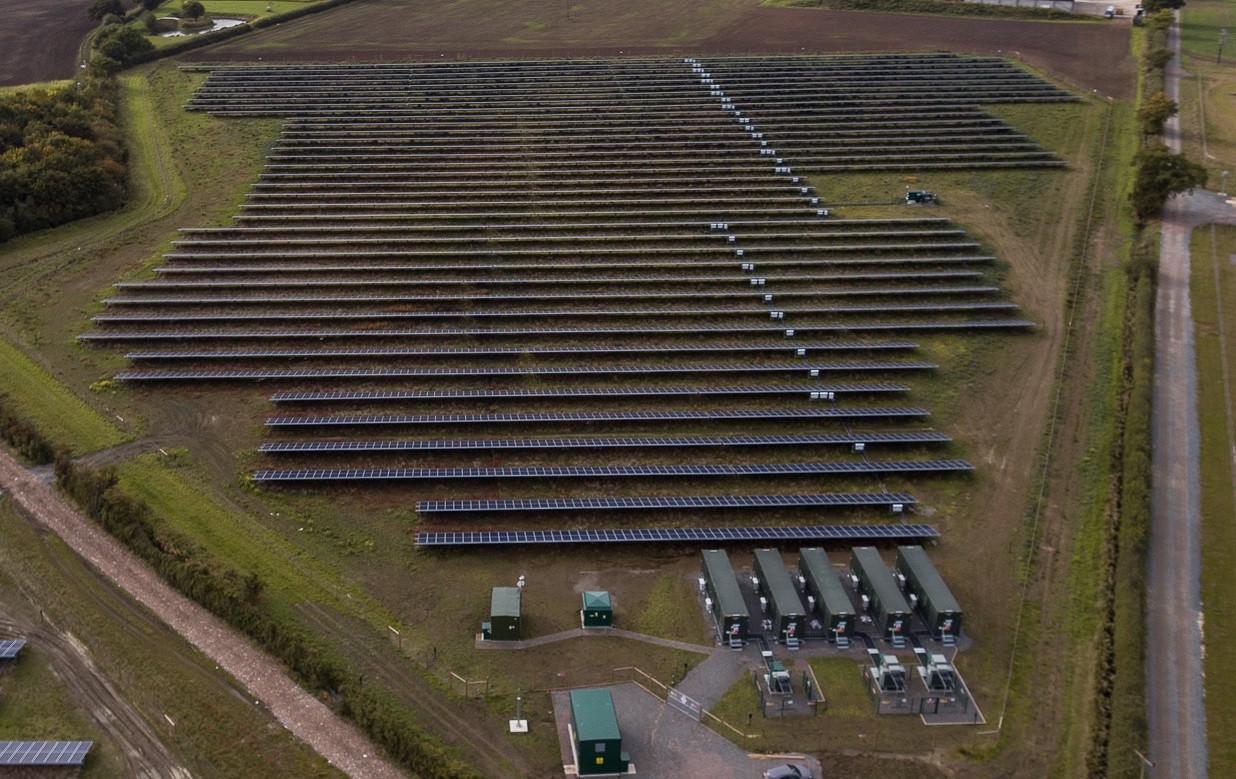
Anesco built Clayhill (pictured), the UK’s first subsidy-free large-scale solar-plus-storage project, which it then sold to GRIDSERVE last year. Image: Anesco
Anesco's new 50MW battery storage site has been given the green light by Brentwood Borough Council, with the project to be another example of how batteries are benefiting the grid and offering returns for investors, the company has said.
The facility is to have a battery energy storage system (BESS) comprising 28 battery units located adjacent to a 132kV substation in Essex, England, with Brentwood Borough Council taking into consideration Anesco’s commitment to return the site to its natural state after the battery plant’s expected 40-year lifespan is up.
The developer will also make “significant ecological enhancements” to the site, including planting trees, hedges and wildflowers, creating scrubland and three new ponds and working to improve the state of an existing pond.
Anesco, one of the UK’s pioneers of battery storage, has developed several projects in the country already, including retrofitting batteries to some of its solar farms. The company built Clayhill, the UK’s first subsidy-free large-scale solar-plus-storage project, which it sold last year to GRIDSERVE, a group now building a network of destination electric vehicle chargers.
In November 2020 Anesco sold 81MW of operational battery storage projects for £28.2 million (US$36.46 million at the time) to stock exchange listed energy storage investor Gore Street Energy Storage Fund and in June this year Anesco itself was acquired by private equity firm Ara Partners and technical and commercial services company Aksiom Services Group.
Evolving business case for batteries
The business case for grid-connected energy storage has evolved and now offers multiple revenue streams for providing essential services to the UK’s transmission operator National Grid, Anesco revenue optimisation head Alan Smallwood told sister site Energy-Storage.news.
“Once in place, the Brentwood battery storage facility will have the potential to generate revenue in a number of different ways, by supporting National Grid to balance the UK's energy system and to maintain grid frequency, ultimately reducing the total cost for the end consumers,” Smallwood said.
As the amount of variable renewable energy on the system grows, the need to balance that intermittency of power and the volatility it creates on the networks does too. Smallwood said that the 50MW project in Brentwood will perform applications including ancillary services, which “reward battery operators for supporting grid stability by helping keep grid frequency at required levels”.
After the success of batteries to help stabilise frequency in selected markets of the US like PJM Interconnection which spans all or parts of 13 different US states, the UK has also been something of an early adopter on allowing battery storage to provide these services. Although its first foray into this area was a 2016 tender for multi-year contracts for enhanced frequency response (EFR), National Grid has since begun to roll out a more merchant approach, allowing assets to compete to meet grid frequency balancing needs.
Alan Smallwood said that the Anesco project will play into the Dynamic Containment market, the newest such grid services opportunity from the network operator, which he explained is “designed to act rapidly when triggered by a fault on the system, to catch and ‘contain’ the resulting deviation in frequency”.
Another important revenue stream for UK battery storage — and the new Anesco project — is the Balancing Mechanism, the main means by which National Grid ensures supply and demand for electricity on the grid are matched at all times.
Earlier this year, in Volume 26 of our quarterly journal PV Tech Power, Solar Media writer Molly Lempriere explored the 'jigsaw of value' in UK energy storage – the weaving together of a business case based on multiple different revenue opportunities. The UK now has over 1.3GW of operational battery storage assets and a pipeline of projects in development totalling nearly 16GW.
This article first appeared on sister site Energy-Storage.news.

